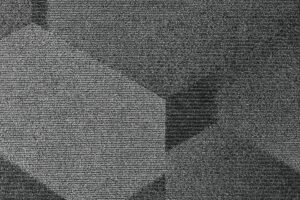A recent survey by the Cleaning Institute reported only 25% of Americans said that cleaning floors were a top priority when doing housecleaning. We feel like that’s not enough TLC for your floors! We get it though. Keeping your floors clean can be a constant battle, but by implementing the appropriate cleaning strategy for different types of floors, it makes life easier. From hardwood to tile, each flooring material requires a specific approach. Let’s take a look at effective cleaning strategies tailored for various floor types.
Hardwood Floors
Hardwood floors add warmth and elegance to any space, but they are also susceptible to scratches and water damage. To preserve the natural beauty of your hardwood floors, start by regularly dusting and vacuuming with a soft-bristle attachment to remove debris that can cause abrasions. Use a pH-neutral hardwood floor cleaner to mop, avoiding excessive water. Excess moisture can seep into the wood, causing warping and damage. Additionally, consider placing rugs or mats in high-traffic areas to prevent wear and tear.
Tile Floors
Tile floors, whether ceramic or porcelain, are durable and easy to clean. However, grout lines can trap dirt and stains over time. For effective tile floor maintenance, sweep or vacuum regularly to prevent dirt buildup. A mixture of baking soda and water can be used to clean grout lines, while a pH-neutral tile cleaner can be applied to the tiles themselves. Be cautious with abrasive cleaners, as they may scratch the tile surface. For a streak-free finish, dry the tiles thoroughly after cleaning.
Carpeted Floors
Carpets are cozy and comfortable, but they require regular care to keep them looking and feeling their best. According to the Environmental Protection Agency (EPA), carpets should be professionally cleaned every 12-18 months to remove deep-seated dirt and allergens. In between professional cleanings, vacuum regularly using a high-quality vacuum cleaner with a HEPA filter. Address spills promptly to prevent stains, and consider using a carpet protector spray to repel stains and spills.
Vinyl Floors
Vinyl flooring is a popular choice for its affordability and versatility. To maintain vinyl floors, sweep or vacuum regularly to remove loose dirt and debris. Use a damp mop with a vinyl floor cleaner for a more thorough cleaning. Avoid using abrasive tools or harsh chemicals that may damage the surface. If your vinyl floor has scuff marks, try using a pencil eraser or a soft, damp cloth with baking soda to gently buff them away.
Stone Floors
Natural stone floors, such as marble or granite, add a touch of luxury to any home. However, they require special care to prevent damage. Avoid acidic cleaners, as they can erode the stone surface. Instead, use a pH-balanced stone cleaner and a soft mop or cloth for regular cleaning. Quickly address spills to prevent staining, and consider applying a sealant to protect the stone from moisture and stains.
Maintaining clean floors is not a one-size-fits-all task. Each type of flooring material demands a specific cleaning strategy to ensure its longevity and aesthetic appeal. Whether you have hardwood, tile, carpet, vinyl, or stone floors, adopting the right cleaning techniques will keep your space looking good. For a professional clean, feel free to get in touch with us.




